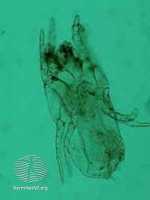Author Interviews, Dermatology, Nature, Stanford / 18.10.2019
Newly Recognized Trigger Mechanism of Atopic Dermatitis Identified
MedicalResearch.com Interview with:
Stephen J. Galli, MD
Mary Hewitt Loveless, MD Professor
Professor of Pathology and of Microbiology and Immunology
Department of Pathology
Stanford University School of Medicine
Center for Clinical Sciences Research
Stanford, CA and
Nicolas Gaudenzio PhD
Unité de Différenciation Epithéliale et Autoimmunité Rhumatoïde
INSERM, Université de Toulouse
Toulouse, France
MedicalResearch.com: What is the background for this study? What are the main findings?
Response: We took a lead from existing clinical data showing that patients with moderate to severe atopic dermatitis, an increasingly common disorder producing skin pathology, also have elevated levels of neuropeptides in their blood, particularly one neuropeptide, named “substance P”, whose level is correlated with disease severity. These patients also have high levels of mast cell-specific proteases in the blood, indicating that mast cells, which are innate immune cells present in the skin, and which can be activated when exposed to substance P, might play an essential role in modulating inflammatory and allergic processes.
Based on these observations, our teams (Galli Lab at Stanford University, USA and Gaudenzio Lab at Inserm Toulouse, France) decided to focus on the possible interactions between sensory neurons, which are a source of substance P, and mast cells. The results of this work have now been published in the journal Nature Immunology. (more…)

